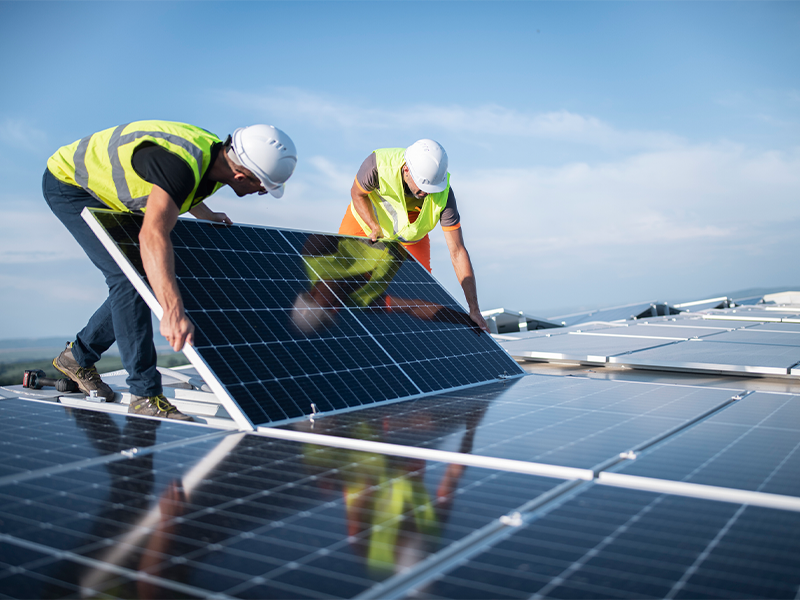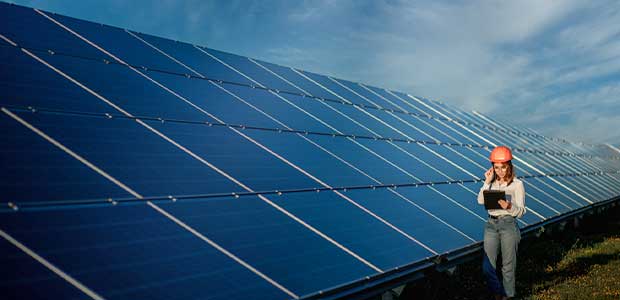Solar Energy 101: A Novice's Guide to Sustainable Power Solutions
As the globe increasingly moves in the direction of sustainable energy remedies, understanding the basics of solar power ends up being vital for both people and businesses. By checking out the benefits of solar technology, alongside the monetary rewards and installment processes, one can obtain a more clear perspective on how to successfully incorporate this eco-friendly source right into their energy approach.
Understanding Solar Power
At its core, recognizing solar power includes realizing the fundamental principles of how sunlight can be converted into functional power. Solar power is originated from the sunlight's radiation, which can be harnessed through different modern technologies. The key device for this conversion is the photovoltaic or pv result. This sensation happens when sunshine strikes semiconductor materials, usually silicon-based, within solar batteries. The power from the sunlight excites electrons in the semiconductor, allowing them to flow easily and create straight present (DC) electrical power.

Comprehending solar energy likewise includes acknowledging its environmental benefits. By making use of sunlight, we can minimize greenhouse gas exhausts and lower air contamination, adding to an extra lasting future. The innovations in technology and efficiency of solar systems remain to boost their viability, making solar power a significantly appealing choice for global power demands.
Types of Solar Power Equipments
Different sorts of solar power systems are typically used to harness solar power for electrical energy generation. The main categories consist of photovoltaic (PV) systems, focusing solar power (CSP) systems, and solar thermal systems.
Photovoltaic or pv systems utilize photovoltaic panels made up of silicon cells that convert sunlight directly right into electrical power. These systems are versatile and can be installed on rooftops, ground installs, or incorporated into building products.
Focusing Solar energy systems, on the various other hand, employ mirrors or lenses to concentrate sunshine onto a small location, generating warm that drives a vapor wind turbine to generate electrical power - Simply Solar Illinois. CSP systems are normally deployed in massive nuclear power plant and require straight sunshine, making them less appropriate for cloudy regions

Each sort of solar energy system has its special qualities, applications, and viability relying on geographical area, power demands, and spending plan, making it necessary to examine choices based upon specific circumstances. - Simply Solar Illinois

Benefits of Solar Power
Utilizing solar power through various systems not just supplies a lasting method to generate electrical power but also offers a multitude of advantages. Among the most significant advantages is the decrease in greenhouse gas exhausts, adding to a cleaner environment and combating environment adjustment. Solar power is sustainable, implying it is infinite and readily available as long as the sun beams, unlike nonrenewable fuel sources, which are finite and diminishing.
In addition, solar power can cause considerable cost financial savings gradually. House owners and companies can reduce their electricity bills significantly, and in most cases, they might make credit ratings for excess energy created via next net metering. In addition, the solar sector creates tasks, from manufacturing to setup, stimulating regional economies.
An additional compelling benefit is energy freedom. By generating their very own electricity, people and communities can minimize dependence on outside power sources, improving strength against rising and fall energy costs and supply disturbances. Moreover, solar energy systems need minimal upkeep, making them a hassle-free option for lasting power generation.
Installment Refine Overview
The setup process for solar power systems generally involves numerous essential actions that make certain efficient assimilation into a residential or commercial property. A detailed website evaluation is conducted to evaluate the roof's orientation, shading, and architectural stability, which are important to maximizing solar panel efficiency. Following this assessment, the design phase begins, where a tailored solar power system is set up based upon the homeowner's power needs and preferences.
As soon as the style is settled, the necessary permits and approvals are obtained from neighborhood authorities, guaranteeing conformity with laws. The real setup involves mounting the solar panels on the roofing or ground, linking them to an inverter, and integrating the system with the property's electrical setup. This phase may additionally include mounting battery storage systems, relying on the style.
After installment, a complete examination is carried out to confirm the system's capability and security. Lastly, the system is commissioned, and house owners are enlightened on its operation and upkeep. With the installment total, the solar power system can start generating renewable resource, adding to sustainability and minimizing utility prices. This structured strategy makes sure that solar systems are both effective and dependable, maximizing their long-term advantages.
Financial Incentives and Cost Savings
Discovering the financial rewards and financial savings related to solar power systems can substantially enhance the appeal of making the button to renewable resource. Various rewards exist at government, state, and neighborhood degrees, created to lower the initial costs connected with solar setup. One of the most noteworthy rewards is the government solar tax obligation credit rating, which enables house owners to subtract a percent of their planetary system installment costs from their federal taxes. As of 2023, this credit report stands at 30%, giving significant financial savings.
In addition to tax credits, several states offer rebates that can even more lower upfront find expenses. Some energy companies additionally give performance-based rewards, satisfying solar energy production with time. Funding options, such as solar lendings and leases, allow customers to set up systems with little to no down payment, making solar power a lot more available.

Lasting cost savings are one more vital aspect. By creating their own electricity, home owners can considerably minimize or also remove their month-to-month power expenses. In addition, solar systems can boost property values, offering a solid return on investment. Overall, the mix of rewards and savings makes solar power an economically attractive option for many homes.
Verdict
In verdict, solar power stands for an essential element of lasting power options, supplying a pathway towards decreased carbon impacts and enhanced ecological defense. Inevitably, the change to solar power not only fosters eco-friendly obligation yet additionally advertises financial financial his explanation savings and power self-reliance.